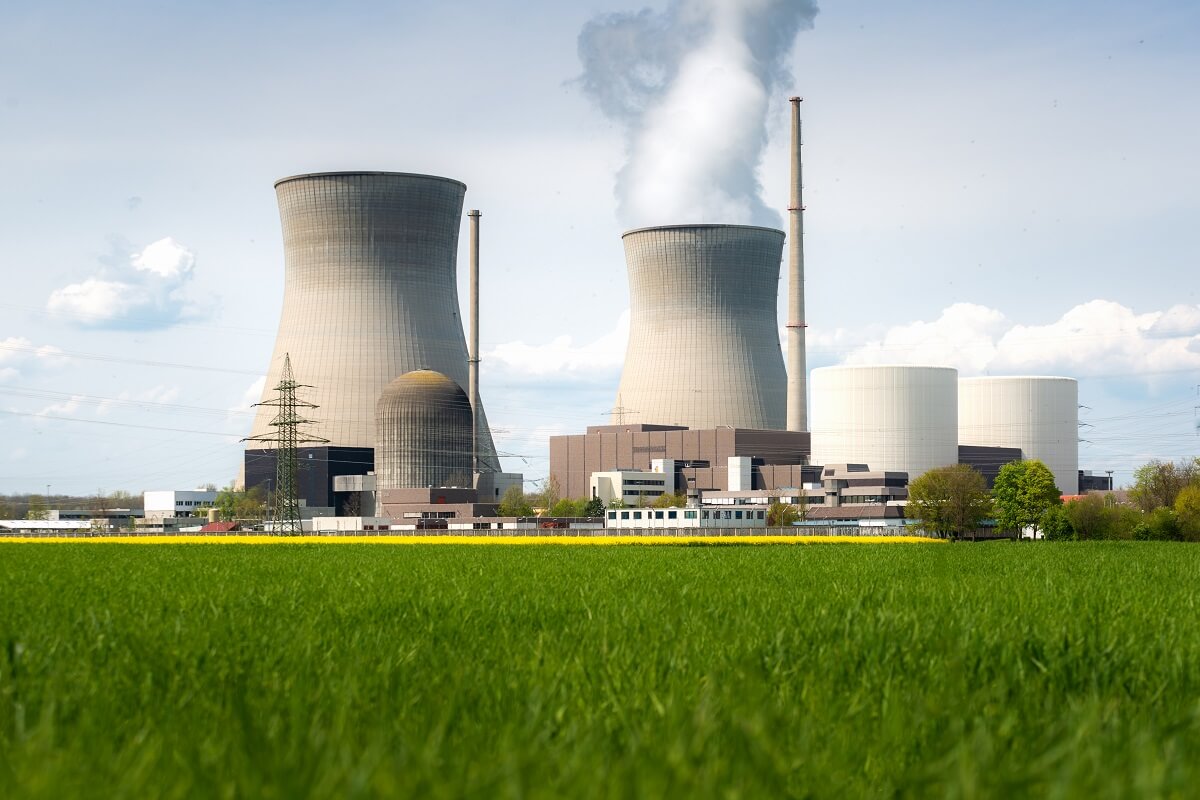Did you know coal pollution is responsible for over 800,000 premature deaths annually worldwide? Despite advances in technology, the burning of coal continues to have a devastating impact on our health and the environment. From toxic air pollutants to water contamination, the effects of coal pollution are far-reaching and alarming. In this article, we will uncover 10 shocking facts about coal pollution and its serious impact on human health.
Table of Contents
Coal Pollution Pervasiveness
Your knowledge about the pervasiveness of coal pollution is crucial in understanding its widespread impact on human health and the environment.
Widespread environmental issue
Pollution from coal-fired power plants is a pervasive environmental issue that affects various ecosystems, including water bodies, soil, and wildlife. The release of toxic substances such as mercury, lead, and sulfur dioxide into the environment leads to contamination of water sources and soil, posing risks to aquatic life and biodiversity. Additionally, the combustion of coal emits particulate matter, which contributes to haze and smog, diminishing the quality of the natural landscape.
Affects air quality globally
The impact of coal pollution on air quality is not limited to local or regional areas. The combustion of coal not only releases greenhouse gases that contribute to climate change, but also releases fine particles and aerosols that can be transported over long distances through the atmosphere. Toxic pollutants from coal combustion can travel across continents, impacting air quality on a global scale.
Respiratory Issues Increase
The burning of coal releases a variety of harmful pollutants into the air, contributing to an increase in respiratory issues among the population. The particles released from coal combustion can penetrate deep into the lungs, causing a range of health problems.
Asthma cases rise
Issues related to asthma have seen a significant rise in areas where coal pollution is prevalent. The release of particulate matter and other pollutants from burning coal can trigger asthma attacks and exacerbate symptoms for those with the condition. This has led to an increase in emergency room visits and hospitalizations for asthma-related issues.
In addition to exacerbating existing asthma cases, coal pollution has also been linked to the development of asthma in individuals who were previously unaffected. Children are particularly vulnerable to these effects, as their developing respiratory systems are more susceptible to damage from environmental pollutants.
Lung disease risk
Asthma is just one of the respiratory issues associated with coal pollution. Long-term exposure to coal pollutants has been linked to an increased risk of developing chronic obstructive pulmonary disease (COPD) and other forms of lung disease. The toxic mix of chemicals and fine particles released by coal combustion can cause inflammation and scarring of the lungs, leading to reduced lung function and an increased susceptibility to respiratory infections.
disease caused by coal pollution can have severe long-term effects on the respiratory health of individuals, significantly increasing the risk of developing chronic conditions such as COPD and lung cancer. The pollutants released from burning coal, including sulfur dioxide and nitrogen oxides, can also contribute to the formation of smog and acid rain, further exacerbating respiratory issues and impacting overall air quality.
Heavy Metals Contamination
Any form of heavy metals contamination is a major concern when it comes to coal pollution. When coal is burned, it releases a variety of heavy metals into the air and surrounding environment. These heavy metals, such as mercury and lead, can pose significant health risks to both humans and wildlife.
Mercury exposure dangers
Toxic mercury is a byproduct of burning coal and is released into the atmosphere, eventually finding its way into our water and soil. Mercury exposure is especially dangerous for pregnant women and young children, as it can cause developmental delays, neurological damage, and a host of other health issues. Additionally, mercury can bioaccumulate in fish and other seafood, leading to potential health risks for those who consume them.
Lead poisoning risks
The effects of lead poisoning can be severe and long-lasting, especially in children. Lead exposure from coal pollution can lead to cognitive and developmental delays, behavioral problems, and decreased IQ levels. Even low levels of lead exposure can have detrimental effects on health, making it crucial to address and mitigate the risks associated with coal-related lead contamination.
Contamination from lead poses a significant threat to public health, as it can lead to a range of serious health issues. It is crucial to implement stringent regulations and controls to minimize lead pollution and protect the health of communities.
Cardiovascular Health Threats
Despite the advancements in medical science, coal pollution continues to pose a significant threat to cardiovascular health. The fine particulate matter and toxic chemicals released by coal combustion are known to have severe impacts on the cardiovascular system, leading to a range of health issues.
Heart attack rates
Heart attack rates are elevated in areas with high levels of coal pollution. The fine particles emitted from coal-fired power plants can enter the bloodstream and trigger inflammation, leading to the development of atherosclerosis. This condition narrows and hardens the arteries, increasing the risk of heart attacks and other cardiovascular complications.
Rates of heart attack are significantly higher in communities located near coal power plants, where residents are exposed to higher levels of air pollution containing sulfur dioxide, nitrogen oxides, and particulate matter.
Stroke occurrences higher
Stroke occurrences are also higher in areas with substantial coal pollution. Coal pollution increases the risk of stroke by promoting the development of blood clots and causing inflammation in the blood vessels. These dangerous impacts can lead to an increased incidence of stroke among individuals living in close proximity to coal power plants.
Cardiovascular health is directly impacted by the toxic emissions from coal combustion, with individuals exposed to high levels of coal pollution facing an elevated risk of heart attacks and strokes.
Climate Change Acceleration
Your health and the environment are at risk due to the acceleration of climate change caused by coal pollution. The impact of coal on climate change is an alarming reality that cannot be ignored. Let’s delve into the shocking facts about how coal pollution is accelerating climate change and its detrimental effects on our health.
CO2 emissions surge
Emissions of carbon dioxide (CO2) from coal combustion have surged to unprecedented levels, significantly contributing to the rapid acceleration of climate change. The combustion of coal in power plants, industrial processes, and vehicles releases vast amounts of CO2 into the atmosphere, trapping heat and leading to global warming. This surge in CO2 emissions is exacerbating the greenhouse effect, intensifying the adverse effects of climate change on the planet.
To make matters worse, the surge in CO2 emissions from coal pollution is causing irreversible damage to the environment and human health. With the increasing reliance on coal as a primary energy source, the surge in CO2 emissions is posing a grave threat to the stability of our climate and the well-being of future generations. The urgent need to address and mitigate the impact of CO2 emissions from coal combustion cannot be overstated.
Water Pollution Concerns
For decades, coal mining has been a significant contributor to water pollution, posing serious health risks to communities near mining sites. The effects of coal pollution on water are wide-ranging and can lead to severe environmental damage and public health concerns.
Acid mine drainage
With the extraction and processing of coal, a dangerous byproduct is created known as acid mine drainage (AMD). This toxic substance is formed when sulfur-bearing minerals in the coal are exposed to air and water, resulting in the release of sulfuric acid and heavy metals. AMD has been linked to the destruction of aquatic ecosystems, the contamination of drinking water sources, and the endangerment of wildlife. The acidic nature of AMD poses a threat to human health as well, causing skin irritation, respiratory issues, and other long-term health problems.
Furthermore, the long-lasting effects of AMD can persist for years, even decades, after mining activities have ceased. Without proper mitigation efforts, the impact of AMD on water quality and surrounding ecosystems can be devastating.
Contaminated drinking supply
With coal mining often taking place in close proximity to residential areas, the risk of contaminated drinking water supply becomes a major concern. Unregulated discharge of pollutants from mining activities can infiltrate local water sources, leading to elevated levels of heavy metals and other harmful substances. Communities relying on such water sources are at risk of exposure to contaminants, which can result in a range of health issues including gastrointestinal problems, organ damage, and an increased risk of certain cancers.
To address these concerns, comprehensive monitoring and regulatory measures are essential to safeguarding the purity of drinking water and protecting public health from the detrimental effects of coal pollution.
Soil Degradation Problems
Unlike many other forms of pollution, coal pollution directly contributes to soil degradation. The release of sulfur dioxide and nitrogen oxides from burning coal can lead to acid rain, which can have a detrimental impact on soil quality. Additionally, the disposal of coal ash, a byproduct of coal combustion, can lead to contamination of soil and water sources, further exacerbating soil degradation problems.
Reduced Agricultural Productivity
To make matters worse, soil degradation caused by coal pollution can result in reduced agricultural productivity. Acidic soil conditions can make it difficult for certain crops to thrive, leading to lower crop yields and diminished quality of produce. This can have serious implications for food security and economic stability in regions affected by coal pollution.
Furthermore, the presence of heavy metals and other toxic substances in contaminated soil can pose health risks to consumers and agricultural workers, further compounding the negative impact of coal pollution on agriculture.
Ecosystem Imbalance Risk
imbalance The impact of soil degradation due to coal pollution extends beyond agriculture, posing a significant risk to overall ecosystem balance. Disrupted soil composition can affect the growth of native vegetation and disrupt the delicate balance of ecosystems, leading to potential declines in biodiversity and ecosystem services. This can have cascading effects on wildlife populations and the stability of natural habitats.
Ecosystem Imbalance Risk: The destabilization of ecosystems due to soil degradation can result in long-term environmental consequences, including soil erosion, loss of habitat, and disruptions to nutrient cycling. These effects can have far-reaching implications for the health and resilience of natural ecosystems, ultimately impacting human societies that depend on them for various resources and ecological services.
Wildlife Habitat Destruction
Not only does coal pollution have a devastating impact on human health, but it also poses a severe threat to wildlife and their natural habitats.
Species displacement common
Any coal mining and burning activities result in the destruction of wildlife habitats, forcing many species to seek new areas to survive. This displacement often leads to conflicts with humans and other wildlife, causing stress and potential harm to the animals. Additionally, the disruption of natural ecosystems can lead to imbalances in predator-prey relationships and food chains, further disrupting the delicate balance of wildlife populations.
The loss of suitable habitats due to coal pollution can also result in the fragmentation of wildlife populations, making it difficult for species to find suitable mates and resources for survival. This can lead to a decrease in genetic diversity within populations and ultimately reduce the overall resilience of wildlife in the face of environmental changes.
Biodiversity loss severe
Any coal pollution has been linked to a severe loss of biodiversity in affected areas. This loss extends beyond individual species and can significantly impact the overall health and functioning of ecosystems. The destruction of habitats due to coal pollution hinders the ability of diverse species to coexist and thrive, leading to a reduction in ecosystem productivity and stability.
Biodiversity is crucial for maintaining ecosystem services such as pollination, nutrient cycling, and pest control. Additionally, the loss of biodiversity due to coal pollution can also have cascading effects on other species and even impact human livelihoods that depend on healthy and diverse ecosystems.
Biodiversity loss as a result of coal pollution is a pressing issue that requires immediate attention to protect the health and stability of our natural environments and the diverse species that depend on them.
Environmental Justice Issues
To address the full scope of coal pollution’s impact, we must also consider the environmental justice issues surrounding the health effects of coal pollution. These issues disproportionately affect low-income communities and communities of color, who often bear the brunt of coal pollution’s health consequences.
Low-income communities suffer
An inescapable truth is that low-income communities suffer the most from coal pollution. These communities often lack the resources to mitigate the health effects of coal pollution, and many are located near coal-fired power plants. This proximity increases their exposure to harmful emissions and exacerbates existing health disparities.
Not only are these communities more likely to experience respiratory issues and cardiovascular diseases as a result of coal pollution, but they also face economic challenges related to healthcare costs and missed work days due to illness.
Disproportionate health impacts
An alarming aspect of coal pollution is its disproportionate health impacts on certain populations. Studies have shown that exposure to coal pollution is linked to higher rates of asthma, lung cancer, and heart disease in these communities.
Furthermore, children and the elderly in these areas are particularly vulnerable to the long-term health effects of coal pollution, including developmental issues and chronic illnesses. It is crucial to recognize and address these disparities to achieve environmental justice for all communities.
Summing up
On the whole, the impact of coal pollution on health is substantial and concerning. As highlighted in this article, coal pollution is linked to a range of respiratory and cardiovascular diseases, as well as environmental damage. These shocking facts shed light on the urgent need to address the harmful effects of coal pollution and transition towards cleaner and more sustainable energy sources. It is crucial for governments, industries, and individuals to take action and implement policies and practices that reduce coal pollution and protect the health of communities worldwide.
FAQ
Q: What are the health effects of coal pollution?
A: Coal pollution can lead to a range of serious health issues, including respiratory diseases such as asthma and chronic obstructive pulmonary disease (COPD), cardiovascular diseases, and even premature death. The toxic particles released from burning coal can also contribute to the development of lung cancer and other forms of cancer.
Q: How does coal pollution impact the environment?
A: Coal pollution is a major contributor to air and water pollution. The release of harmful pollutants such as sulfur dioxide, nitrogen oxides, and mercury can lead to acid rain, smog, and the contamination of water sources. This not only harms ecosystems and wildlife, but also poses serious health risks to humans.
Q: What are some solutions to reduce coal pollution and its impact on health?
A: Transitioning to cleaner energy sources such as renewable energy, implementing stricter emissions standards for coal-fired power plants, and investing in advanced technologies like carbon capture and storage (CCS) can help reduce coal pollution. Additionally, promoting energy efficiency and implementing policies to phase out coal use can significantly improve air quality and public health.

Our contributing author is a passionate advocate for eco-friendly living and sustainability. With a background in eco-life, they are dedicated to inspiring and empowering individuals to adopt environmentally conscious lifestyles. Through insightful articles, they share practical tips, innovative solutions, and thought-provoking perspectives to promote a greener, more sustainable world. Join them on the journey towards eco-smart living and discover how small choices can make a big impact. 🌱









